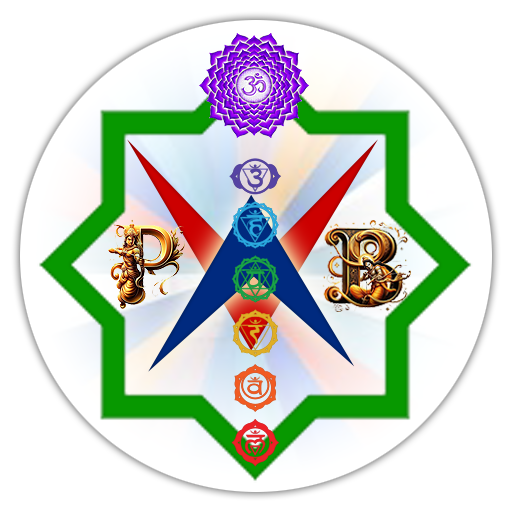శ్రీమద్భగవద్గీత - 366: 09వ అధ్., శ్లో 28 / Bhagavad-Gita - 366: Chap. 09, Ver. 28
- Prasad Bharadwaj
- May 6, 2023
- 2 min read

🌹. శ్రీమద్భగవద్గీత - 366 / Bhagavad-Gita - 366 🌹
✍️. శ్రీ ప్రభుపాద, 📚. ప్రసాద్ భరద్వాజ
🌴. 9వ అధ్యాయము - రాజవిద్యా రాజగుహ్య యోగం - 28 🌴
28. శుభాశుభఫలరేవం మోక్ష్యసే కర్మబన్ధనై: |
సన్న్యాసయోగయుక్తాత్మా విముక్తో మాముపైష్యసి
🌷. తాత్పర్యం :
ఈ విధముగా నీవు కర్మబంధముల నుండి మరియు వాని శుభాశుభఫలముల నుండి ముక్తుడవు కాగలవు. ఇట్టి సన్న్యాసయోగముతో నా యందు మనస్సును స్థిరపరచుట ద్వారా నీవు విముక్తుడవై నన్ను పొందగలవు.
🌷. భాష్యము :
ఉన్నతమైన మార్గదర్శకత్వమున కృష్ణభక్తిభావనలో వర్తించువాడు యుక్తుడని పిలువబడును. దీనికి సరియైన పదము “యుక్తవైరాగ్యము”. ఈ విషయమును గూర్చి శ్రీరూపగోస్వామి మరింతగా ఇట్లు వర్ణించిరి.
అనాసక్తస్య విషయాన్ యథార్హముపయుంజత: |
నిర్భంధ: కృష్ణసంబంధే యుక్తం వైరాగ్య ముచ్యతే (భక్తిరసామృతసింధువు 1.2.255)
భౌతికజగమున ఉన్నంతవరకు మనము కర్మ చేయవలసిన ఉండును. కర్మను విరమించుట సాధ్యము కాదు.
కనుకనే కర్మలను ఒనరించి ఆ ఫలమును శ్రీకృష్ణునకు సమర్పించినచో అది “యుక్తవైరాగ్యము” అనబడునని శ్రీరూపగోస్వామి పలికిరి. వైరాగ్యమునందు వాస్తవముగా నెలకొనినపుడు అట్టి కర్మలు చిత్తదర్పణమును పరిశుభ్రము చేయగలవు. ఇక కర్త ఆధ్యాత్మికానుభవమునందు క్రమపురోగతి సాధించిన కొలది శ్రీకృష్ణభగవానుని సంపూర్ణ శరణాగతుడై అంత్యమున మోక్షమును బడయును. అతడు పొందు ముక్తియు స్పష్టముగా వివరింపబడినది.
ఈ ముక్తి ద్వారా అతడు బ్రహ్మజ్యోతిలో లీనముగాక భగవద్దామమున ప్రవేశించునని “మాముపైష్యసి” (నన్ను పొందును) యను పదము ద్వారా స్పష్టముగా తెలుపబడినది. వాస్తవమునకు ముక్తి ఐదురకములైనను జీవితమంతయు శ్రీకృష్ణభగవానుని నేతృత్వమున భక్తియోగమును సాగించిన భక్తుడు మాత్రము ఆధాత్మికముగా అత్యున్నతస్థితికి చేరి, దేహత్యాగానంతరము ఆ దేవదేవుని ధామము కేగి అతని ప్రత్యక్ష సాహచర్యమున నియుక్తుడగును.
🌹 🌹 🌹 🌹 🌹
🌹 Bhagavad-Gita as It is - 366 🌹
✍️ Sri Prabhupada, 📚 Prasad Bharadwaj
🌴 Chapter 9 - Raja Vidya Raja Guhya Yoga - 28 🌴
28. śubhāśubha-phalair evaṁ mokṣyase karma-bandhanaiḥ
sannyāsa-yoga-yuktātmā vimukto mām upaiṣyasi
🌷 Translation :
In this way you will be freed from bondage to work and its auspicious and inauspicious results. With your mind fixed on Me in this principle of renunciation, you will be liberated and come to Me.
🌹 Purport :
One who acts in Kṛṣṇa consciousness under superior direction is called yukta. The technical term is yukta-vairāgya. This is further explained by
Rūpa Gosvāmī as follows:
anāsaktasya viṣayān yathārham upayuñjataḥ
nirbandhaḥ kṛṣṇa-sambandhe yuktaṁ vairāgyam ucyate (Bhakti-rasāmṛta-sindhu, 1.2.255) Rūpa Gosvāmī says that as long as we are in this material world we have to act; we cannot cease acting. Therefore if actions are performed and the fruits are given to Kṛṣṇa, then that is called yukta-vairāgya. Actually situated in renunciation, such activities clear the mirror of the mind, and as the actor gradually makes progress in spiritual realization he becomes completely surrendered to the Supreme Personality of Godhead. Therefore at the end he becomes liberated, and this liberation is also specified. By this liberation he does not become one with the brahma-jyotir, but rather enters into the planet of the Supreme Lord. It is clearly mentioned here: mām upaiṣyasi, “he comes to Me,” back home, back to Godhead. There are five different stages of liberation, and here it is specified that the devotee who has always lived his lifetime here under the direction of the Supreme Lord, as stated, has evolved to the point where he can, after quitting this body, go back to Godhead and engage directly in the association of the Supreme Lord. 🌹 🌹 🌹 🌹 🌹




Comments